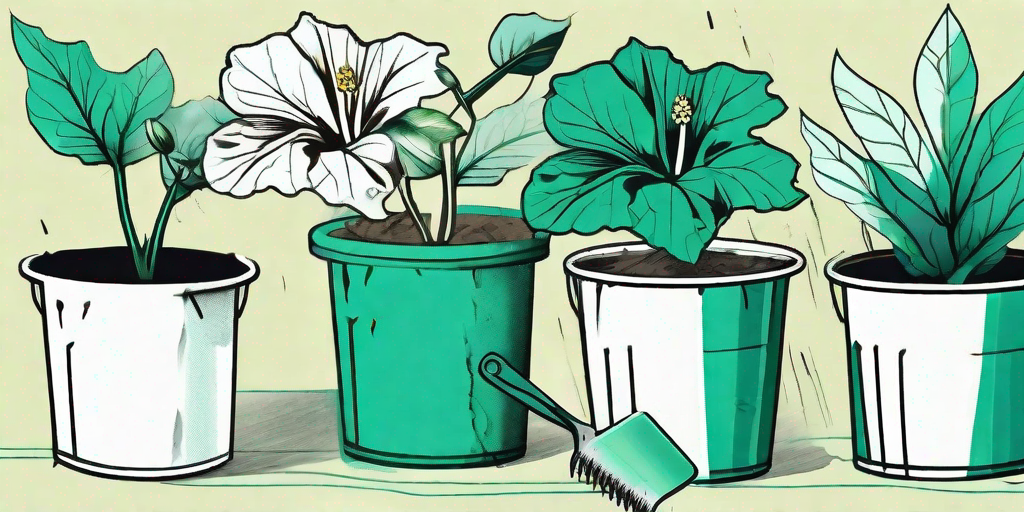
If your hibiscus has started to sport a yellow hue instead of its usual vibrant green, don't panic! It's not auditioning for a role in a plant-based rendition of The Simpsons. It's just trying to tell you something. So, let's put on our detective hats, grab our magnifying glasses, and get to the root of the problem, shall we?
Understanding the Hibiscus Plant
Before we dive into the world of hibiscus diagnostics, let's take a moment to understand this tropical beauty. The hibiscus plant, with its large, flamboyant flowers and lush foliage, is a showstopper in any garden. But like any diva, it has its own set of demands. And if these demands aren't met, it's not above throwing a tantrum in the form of yellow leaves.
So, what does a hibiscus plant want? Well, it's not asking for a private dressing room filled with blue M&Ms. It just needs the right amount of sunlight, water, and nutrients. And if it's not getting these, it's going to let you know.
Diagnosing Yellow Leaves
Light Levels
Is your hibiscus getting too much sun, or perhaps not enough? While the hibiscus loves the spotlight, too much of a good thing can cause leaf scorch, resulting in yellow leaves. On the other hand, if your hibiscus is lurking in the shadows, it may also start to yellow due to lack of light.
So, how do you strike the right balance? Ideally, your hibiscus should be basking in the sun for at least six hours a day. But remember, it's not a sun-worshipping fanatic. It appreciates a little shade during the hottest part of the day.
Watering Woes
Watering is a bit of a Goldilocks situation. Too much or too little, and your hibiscus will protest with yellow leaves. Overwatering can lead to root rot, while underwatering can cause dehydration. Both scenarios result in a very unhappy, yellow-leafed hibiscus.
So, what's the "just right" amount? Well, your hibiscus likes its soil to be consistently moist, but not waterlogged. If the top inch of soil is dry, it's time to water. But if the soil is still damp, hold off on the H2O.
Nutrient Deficiencies
Just like us, plants need a balanced diet to stay healthy. If your hibiscus is lacking in certain nutrients, it may start to yellow. Common culprits include nitrogen, potassium, and iron deficiencies.
How can you tell if your hibiscus is nutrient deficient? Well, yellow leaves are a big clue. But the pattern of yellowing can also give you a hint. For example, if the older leaves are yellowing, it could be a nitrogen deficiency. If the yellowing is between the veins of the leaves, it could be an iron deficiency.
Treating Yellow Leaves
Adjusting Light Levels
If your hibiscus is getting too much sun, consider moving it to a location with a bit more shade. If it's not getting enough sun, move it to a sunnier spot. Remember, your hibiscus is a bit of a sun diva, so try to give it that six hours of sunlight it craves.
But what if your hibiscus is planted in the ground and can't be moved? Well, you could consider installing a shade cloth to protect it from the harsh afternoon sun. Or, you could plant taller plants nearby to provide some natural shade.
Watering Wisely
If you've been overwatering your hibiscus, cut back on the water. Wait until the top inch of soil is dry before watering again. If you've been underwatering, increase your watering frequency. Remember, your hibiscus likes its soil to be consistently moist, but not waterlogged.
And don't forget about drainage! If your hibiscus is in a pot, make sure it has adequate drainage holes. If it's in the ground, make sure the soil drains well. Your hibiscus doesn't like to have wet feet!
Feeding Your Hibiscus
If your hibiscus is nutrient deficient, it may need a little extra feeding. Consider using a balanced, slow-release fertilizer to provide your hibiscus with the nutrients it needs. You can also use a foliar spray for a quick nutrient boost.
But remember, more isn't always better when it comes to fertilizer. Too much can cause nutrient burn, leading to—you guessed it—yellow leaves. So, follow the package instructions carefully.
FAQs
- Why are the leaves on my hibiscus turning yellow?
Yellow leaves can be a sign of too much or too little light, overwatering or underwatering, or nutrient deficiencies. - How much sun does a hibiscus need?
A hibiscus needs at least six hours of sunlight a day, but it appreciates a little shade during the hottest part of the day. - How often should I water my hibiscus?
Water your hibiscus when the top inch of soil is dry. The soil should be consistently moist, but not waterlogged. - What kind of fertilizer should I use for my hibiscus?
Use a balanced, slow-release fertilizer. You can also use a foliar spray for a quick nutrient boost.
So, there you have it! A comprehensive guide to diagnosing and treating yellow leaves on your hibiscus. Remember, your hibiscus isn't trying to give you a hard time. It's just trying to tell you what it needs. So, listen to your plant, adjust your care routine as needed, and your hibiscus will be back to its green, leafy self in no time.















